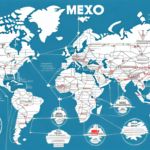What Is Cheaper: USPS or UPS?
When it comes to shipping packages, numerous factors come into play, including delivery speed, reliability, and, of course, cost. Two of the most prominent shipping carriers in the United States are the United States Postal Service (USPS) and United Parcel Service (UPS). A common question among businesses and individuals is: which is cheaper? In this comprehensive guide, we will delve into the factors influencing shipping costs, compare the rates and services offered by both USPS and UPS, and provide actionable tips for saving on shipping expenses.
Introduction to USPS and UPS
The USPS was established in 1775 and operates as an independent agency of the federal government. It provides postal services to all American citizens, including shipping and mailing solutions. Conversely, UPS, founded in 1907, is a private shipping carrier that has evolved into one of the world's largest and most recognized shipping companies.
One key distinction between USPS and UPS lies in their pricing structures. USPS offers a range of affordable shipping options, such as flat-rate boxes and envelopes, making it a favored choice for small businesses and individuals. UPS, while typically more expensive, provides a broader spectrum of services, including international shipping and same-day delivery.
Delivery times are another critical factor. USPS generally delivers within 2-3 days for domestic shipments, whereas UPS offers various delivery options, including next-day and 2-day delivery. Your specific shipping needs and timeline will significantly influence the choice between these carriers.
Factors That Affect Shipping Costs
Understanding the elements that influence shipping costs is essential before making a comparison. These factors include:
- Package Weight and Dimensions: Heavier and larger packages cost more to ship.
- Delivery Speed: Faster delivery options typically come at a higher price.
- Distance: Longer distances can increase shipping costs.
- Additional Services: Services like insurance, tracking, and signature confirmation can add to the cost.
- Special Requirements: Handling hazardous materials or requiring specific delivery conditions can affect pricing.
Additionally, the type of product being shipped plays a role. Fragile or high-value items may incur higher shipping costs due to the extra care and handling they require. Certain products might also be subject to regulations or restrictions that impact shipping expenses.
Shipping Rates Comparison: USPS vs. UPS
Let's compare the shipping rates of USPS and UPS using a hypothetical 2lb package shipped from Los Angeles, CA to New York, NY.
| Carrier/Service | Delivery Time | Shipping Cost |
|---|---|---|
| USPS Priority Mail | 1-3 days | $9.98 |
| USPS First Class Mail | 2-3 days | $5.05 |
| UPS Ground | 1-5 days | $18.54 |
| UPS 3-Day Select | 3 days guaranteed | $23.05 |
As illustrated, USPS generally offers more affordable shipping rates, especially for slower delivery times. However, USPS may not always be the optimal choice for certain packages or specific delivery requirements.
Both USPS and UPS provide additional services such as insurance, tracking, and signature confirmation for an extra fee. These services enhance the security and reliability of shipments, making them valuable for high-value or sensitive packages.
USPS Shipping Services and Rates Breakdown
Let's explore the various shipping services and rates offered by USPS in detail.
Priority Mail
Priority Mail is one of USPS's most popular services, guaranteeing delivery within 1-3 business days. Rates are based on package weight and distance, starting at $7.70 (online rate) for packages up to 1lb, with costs increasing based on weight and distance. Additionally, Priority Mail includes free USPS tracking and up to $50 of insurance.
First Class Mail
First Class Mail is ideal for smaller packages weighing up to 13oz. It offers a delivery time of 2-3 days and is generally more economical than Priority Mail, with rates starting at $3.80 (online rate) for packages up to 1oz, increasing with weight and distance.
Flat Rate Boxes
USPS provides a variety of Flat Rate Boxes that allow you to ship for a fixed rate, regardless of weight or distance. This option is particularly beneficial for heavier packages. Rates start at $8.45 for a Small Flat Rate Box and increase for larger sizes. Flat Rate Boxes can simplify shipping costs and are a cost-effective solution for bulkier items.
International shipping is also available through USPS, with services like Priority Mail International and First-Class Package International Service catering to different weight limits and destination countries. Rates vary based on destination, package weight, and shipping speed. USPS provides customs forms and tracking for international shipments, enhancing reliability and compliance with international shipping regulations.
UPS Shipping Services and Rates Breakdown
Now, let's examine the shipping services and rates offered by UPS in more detail.
Ground
UPS Ground is a reliable and cost-effective option for packages that do not require expedited shipping. Delivery times range from 1-5 days, depending on the distance. Rates start at $13.85 (online rate) for packages up to 1lb, with prices increasing based on weight and distance.
3-Day Select
UPS 3-Day Select guarantees delivery within three business days. Rates begin at $19.29 (online rate) for packages up to 1lb and increase with weight and distance. This service is suitable for packages that need to arrive within a specific timeframe without the premium cost of overnight services.
2nd Day Air
UPS 2nd Day Air ensures delivery within two business days. Rates start at $27.50 (online rate) for packages up to 1lb, with costs rising based on weight and distance. This option is ideal for shipments that require faster delivery without the urgency of next-day services.
Next Day Air
UPS Next Day Air is the fastest shipping option offered by UPS, guaranteeing delivery by the next business day. Rates commence at $36.25 (online rate) for packages up to 1lb and increase with weight and distance. This service is perfect for urgent or time-sensitive shipments where speed is of the essence.
Which Is Cheaper for Domestic Shipments: USPS or UPS?
Based on the comparison above, USPS generally offers more affordable rates for domestic shipments, particularly for slower delivery times. This makes USPS a cost-effective choice for businesses and individuals who prioritize budget over speed.
However, UPS may be more economical for shipping packages over 2lbs or for those with specific delivery requirements. UPS also provides a broader range of delivery options and advanced tracking features, which can be crucial for businesses that require reliable and timely deliveries.
USPS's flat-rate shipping options can offer significant savings for heavier items, while its extensive network of post offices and drop-off locations enhances convenience for many users.
Conversely, UPS offers more advanced tracking capabilities and delivery options, such as guaranteed delivery times and the flexibility to reroute packages in transit. These features can be especially beneficial for businesses or individuals who need to ensure the secure and timely delivery of their shipments.
Which Is Cheaper for International Shipments: USPS or UPS?
For international shipments, USPS often presents a more economical option, offering lower rates for certain destinations and package sizes. USPS's international services, such as Priority Mail International and First-Class Package International Service, provide competitive rates that are attractive for sending packages overseas.
However, UPS provides more comprehensive tracking and delivery options for international shipments, which can be advantageous for businesses and individuals requiring detailed shipment monitoring and faster delivery times. UPS's global network and expertise in international shipping can also navigate complex customs regulations more efficiently.
The cost of international shipments varies significantly based on destination, package weight, and dimensions. It is advisable to compare rates and services offered by both USPS and UPS before making a decision. Additionally, be aware of potential restrictions, customs duties, and fees that can impact the overall cost and delivery time of your international shipments.
Is It Cheaper to Use Flat Rate Boxes?
Flat Rate Boxes can be a cost-effective solution, particularly for packages weighing over 2lbs. They offer fixed pricing regardless of the package's weight or the distance it needs to travel, simplifying the shipping process and potentially saving money on larger or heavier items.
For smaller packages, First Class Mail from USPS may be the more economical choice. The decision between flat-rate boxes and First Class Mail depends on the package's weight, size, and shipping requirements. Flat Rate Boxes are especially beneficial for cross-country shipments, where the consistent pricing model can lead to significant savings compared to variable rates based on distance.
However, it's essential to evaluate the package's size and weight. For small and lightweight items, using a padded envelope or a standard box with regular shipping rates might be more cost-effective than opting for a flat-rate box. Always compare pricing and shipping options to determine the most efficient and economical choice for your specific needs.
How to Save Money on Shipping Costs with USPS or UPS
Here are several strategies to reduce your shipping expenses with both USPS and UPS:
- Compare Rates and Services: Evaluate the rates and services of both carriers to identify the most cost-effective option for your specific package and delivery requirements.
- Optimize Packaging: Use smaller and lighter packaging to minimize weight and dimensional shipping costs.
- Utilize Flat Rate Options: For heavier packages, consider using flat-rate boxes or envelopes to take advantage of fixed pricing.
- Leverage Shipping Platforms: Employ shipping platforms or software to streamline the shipping process and access discounted rates.
- Negotiate with Carriers: If you have a high shipping volume, negotiate rates with carriers to secure better pricing.
- Automate Label Printing: Save time and reduce errors by automating label printing through integrated shipping solutions.
Implementing these strategies can lead to significant savings and more efficient shipping operations for both businesses and individuals.
Customer Reviews on Shipping Costs of USPS and UPS
Customer experiences with USPS and UPS vary widely based on the specific shipping service, package weight, destination, and delivery requirements. Some customers appreciate USPS for its affordability and extensive network, finding it reliable for standard and lightweight shipments. Others prefer UPS for its superior tracking capabilities, faster delivery options, and robust customer service.
It's crucial to conduct your own research and consider your unique shipping needs when choosing between USPS and UPS. Reviewing recent customer feedback and performance ratings can provide valuable insights into each carrier's reliability and cost-effectiveness.
Conclusion: Which Is the Better Option for Your Business?
The decision between USPS and UPS ultimately depends on your business's specific shipping requirements. USPS tends to be the more economical choice for slower domestic shipments and certain international destinations, offering competitive rates and convenient drop-off locations.
On the other hand, UPS may be more suitable for heavier packages, time-sensitive deliveries, and shipments requiring advanced tracking and delivery options. UPS's extensive range of services and reliable delivery timelines make it a preferred option for businesses that prioritize speed and accuracy.
Consider all the factors discussed, compare rates and services thoroughly, and consider negotiating rates with carriers based on your shipping volume to determine the best option for your business's needs.






















